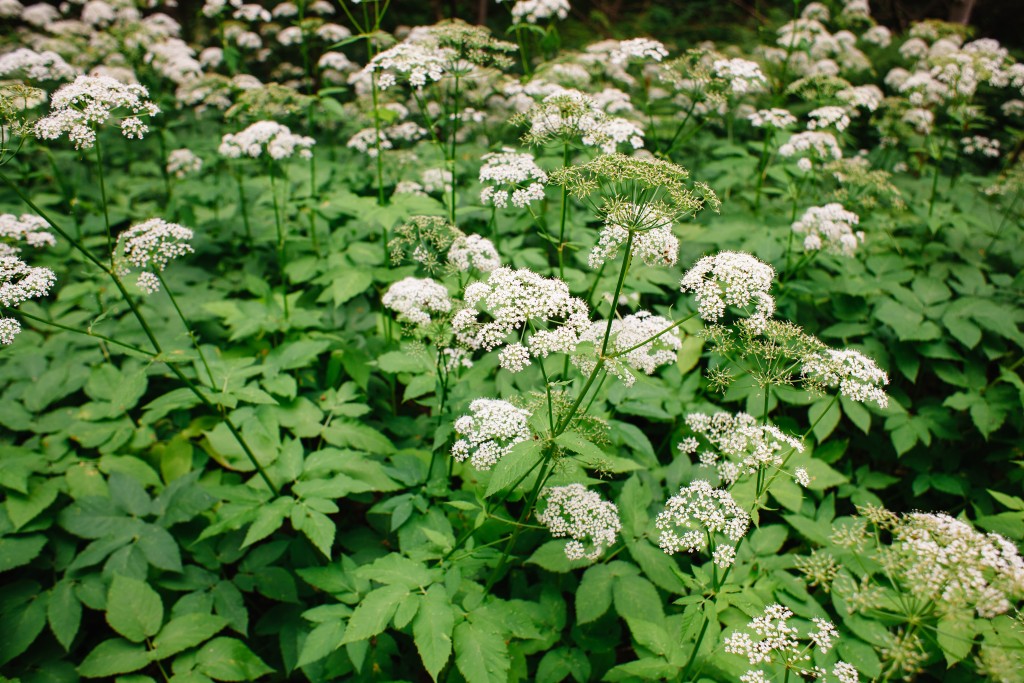The green-leaf form of goutweed (Aegopodium podagraria). Photo: martiroz, depositphotos
By Larry Hodgson
Question: I have a serious problem. Green goutweed is invading my flower bed and that of my neighbor. We’ve been trying to get rid of it out for two years, but nothing we tried—pulling, digging, rototilling, herbicide, etc.—worked: it just keeps growing back! I’ve been told that laying wooden planks on the ground for a few years will get rid of it, but I have a lot of valuable plants in that garden. I’d be afraid to relocate them temporarily while waiting for the planks to do their job, as I don’t want my flower beds elsewhere to become contaminated by a rhizome from this horrible plant. What should I do?
Nancy Clarke
Answer: Yes, you do indeed have a serious problem. Goutweed (Aegopodium podagraria), also known as ground elder, bishop’s weed and snow-in-the-mountain, is an extremely invasive plant due to its dense growth and numerous rhizomes that produce dozens of satellite plants. It can choke out almost any plant in its path. And you don’t even have the more ornamental variegated variety (Aegopodium podagraria ‘Variegata’), with green and white foliage, which is a little less vigorous, but instead the original form, a true garden thug with entirely green leaves. It is certainly one of the most difficult weeds* to get rid of.
*To give the devil his due, goutweed is also a medicinal and edible plant that some people appreciate… but usually not gardeners!
Additionally, you’re wise to be concerned that plants salvaged from the infested bed might include a piece of goutweed rhizome that could go on to take over your garden. That happens readily, as its rhizomes easily mix into the root system of desirable plants and can start a new infestation. I have two suggestions in this regard.
The first is to abandon the mother plants when you cover the bed, killing them too. Instead, take stem cuttings. Surprisingly few gardeners realize that the majority of perennials, shrubs and other ornamental plants are as easily multiplied by cuttings as well as by division. And when you take a stem cutting, no unwanted rhizomes will follow. So, plants grown from stem cuttings will be free of goutweed.
The second option is to dig up the plants, wash the roots, extract any rhizomes you see, and then plant them up in pots (not in another flower bed) while you’re waiting for your treatment to be effective. That way, if goutweed were to appear in some pots but not others; at least you could replant the goutweed-free plants without fear of reintroducing your enemy.
A Tarp Rather Than Planks
The idea of covering your garden with planks is quite good. That way, you’ll cut off the light reaching the goutweed and without light, no green plant can survive, not even goutweed. A thick black tarp, on the other hand, would be more effective than planks, as some light can pass through the gaps in the planks and keep some goutweed plants alive. A light-excluding tarp will cover a larger area without letting any light whatsoever get through. You could use bricks, stones or planks to hold the tarp in place or hide it under mulch.
Note that your neighbor also has to do the same thing at the same time as you; otherwise the plant will creep under the fence and come back to invade your garden in no time!
It takes at least a full growing season without light to kill goutweed. Established plants will likely need two years. Sometimes, a very weakened stem or two will even sprout after the colony has been without light for two years, a sort of horticultural last gasp, but if you cut it back promptly, it won’t have the energy to regrow and that will totally eliminate the goutweed. So, if you apply this technique in the spring (2022), the flower bed probably will be free of goutweed and ready to replant in the spring 2024.

